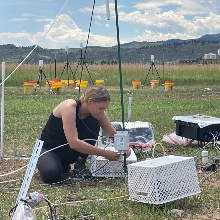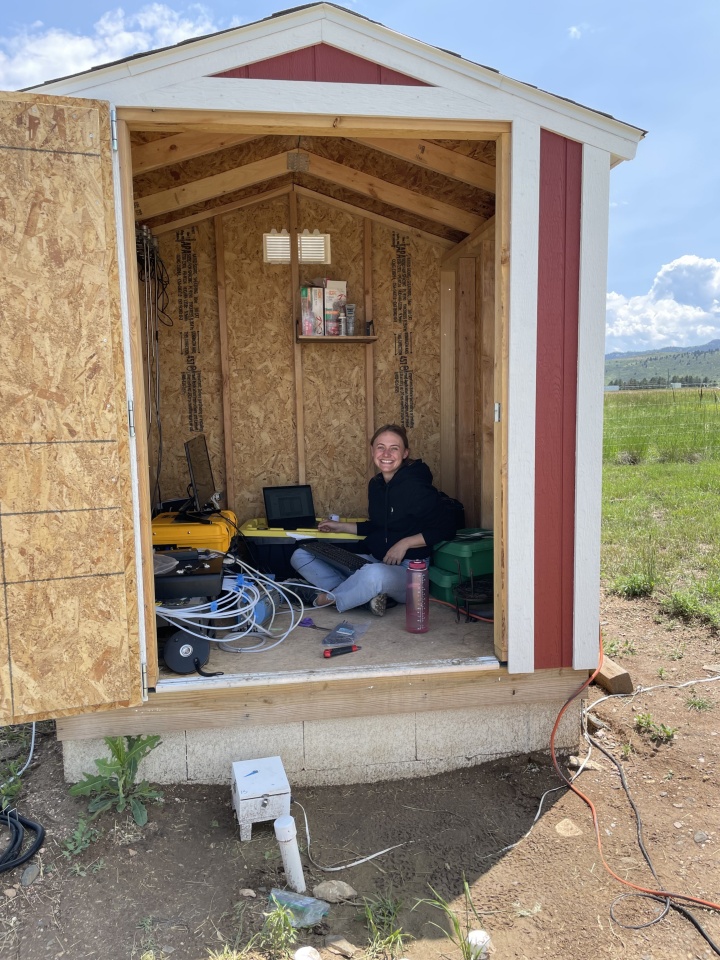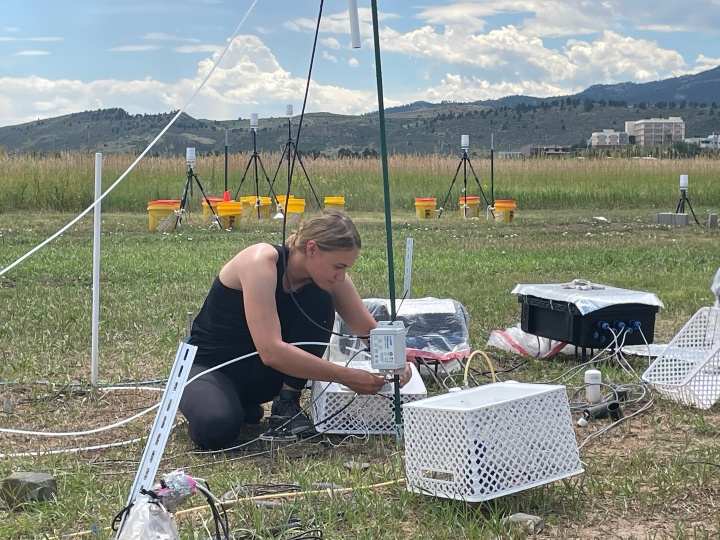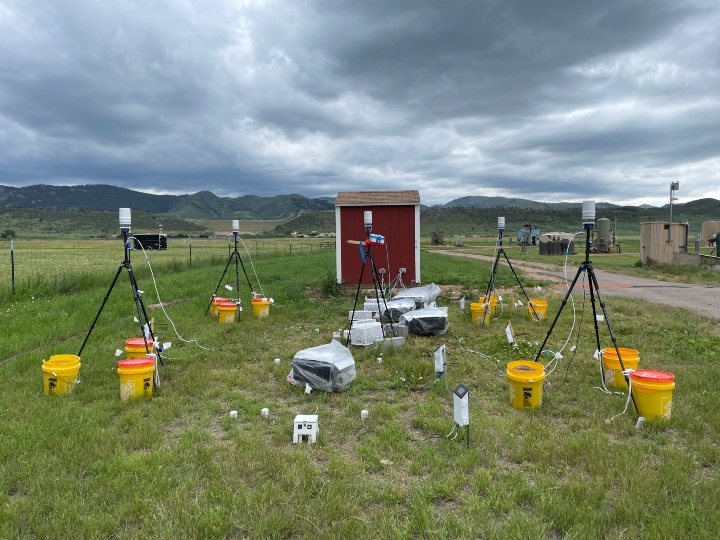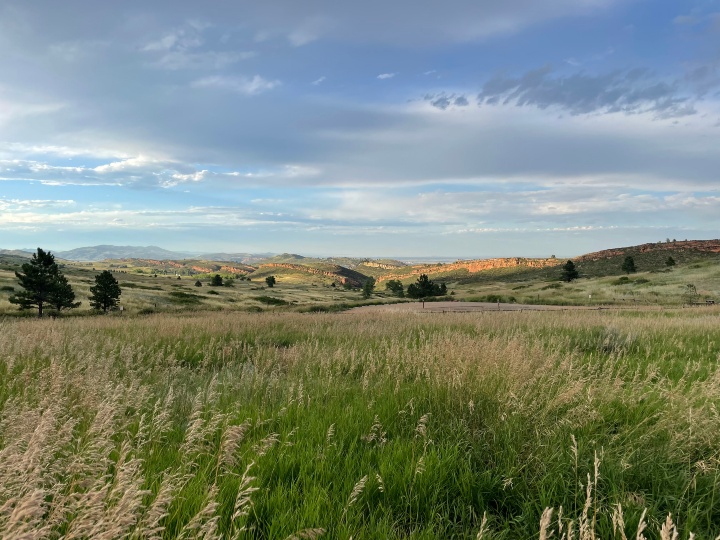Background of the Research Stay
The reduction of greenhouse gases is one of the challenges of our generation to fight climate change. One source of greenhouse gas emissions that could be limited is the release of methane from natural gas pipelines. Prof. Dr. Kathleen Smits and her group from Southern Methodist University are working on understanding the principles of methane spreading and its detection above and below ground. In my work, I am focusing on different applications of evaporation processes across the soil-atmosphere interface. The research work of Prof. Smits complements my previous work, as one part of the work focuses on how multi-components spread within soils and the near atmosphere during evaporation.
Report by Stefanie Kiemle
I visited Prof. Smits from the end of May to the beginning of August as part of the Integrated Research Training Group of SFB 1313 "Interface-Driven Multi-Field Processes in Porous Media" and within the SFB 1313 Project CX5 (Vision topic "Salt Precipitation"). I had the opportunity to visit her chair at the Southern Methodist University (SMU) in Dallas, Texas, and to conduct my own experiments at Methane Emission Test Center (METEC) at the Colorado State University (CSU) in Fort Collins, Colorado. The aim of my research stay was to survey the methane and water vapor migration across the soil-atmosphere interface during evaporation under outdoor conditions.
The METEC test field site is featured with a pipeline system that allows the controlled release of methane into the subsurface. Thus, methane detection above and below ground can be conducted under ensured conditions. At the test site, the group of Prof. Smits installed below-ground methane gas sensors (Type: Integrated Infrared (INIR)) at various depths to capture the formation of the methane plume. We extended this experimental setup by adding methane gas sensors also at the soil surface and sampled and analyzed the atmospheric methane gas concentration using an ultraportable greenhouse gas analyzer. The aim of this extension was to also understand the formation of the methane plume above ground with a focus on the soil-atmosphere interface. We sampled the methane concentration at different heights around and at the methane release point. To understand the formation of the methane plume above ground, we installed several weather stations (Type: Meter Group ATMOS-41, TriSonica Mini Wind) to capture the impact of wind speed and wind direction on the gas plume. In combination with the weather station results, we were able to see in a first analysis how the wind speed and the wind directions are influencing the formation of the methane plume above and below ground.
I am grateful for the support of the SFB1313 for giving me the opportunity to visit the US. Staying and working within sight of the Rocky Mountains was a great experience. Moreover, I thank Prof. Dr. Kathleen Smits and her group for their hospitality and for the introduction to the experimental world.

Stefanie Kiemle
M. Sc.Doctoral Researcher C-X5, Project MGK


